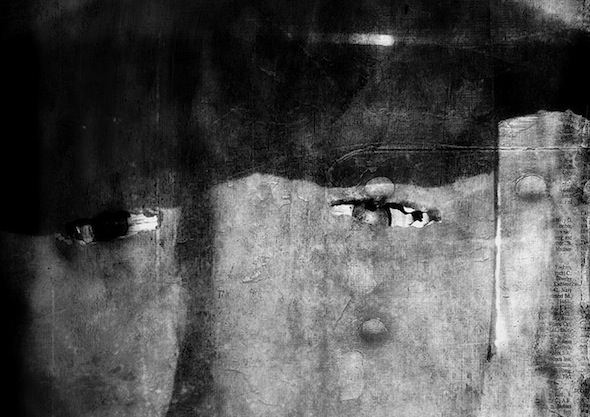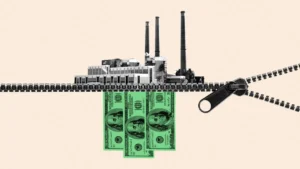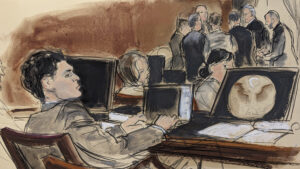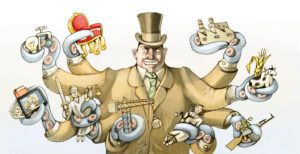Beyond the Spectacle of Neoliberal Violence in the Age of Terrorism
When our inner worlds work under the death-haunted dictates of casino capitalism, the Apocalypse is embraced as if it functioned exclusively as a form of entertainment, rather than providing a warning about the rise of militarism, the killing of civilians, and religious and political fundamentalisms.
By Henry A. Giroux, CounterPunchThis piece first appeared at CounterPunch.
The spectacle of violence and terrorism looms large in the post 9/11 world. As the recent beheading of James Foley by Islamic extremists makes clear, mass-mediated terrorism is now joined with the spectacle of violence, torture, and beheadings so as to open up a new space in which politics is shaped by the regressive morality of ideological fundamentalism, willfully degenerating into pathology. As shocking as these events may be, they offer no guarantees politically or pedagogically because the substantive nature of crisis itself has become frail, subject to its colonization by Hollywood spectacles and a disimagination machine that thrives on representational excess and a surrender to the infantilism of apocalyptic despair. Violence and human suffering are now framed outside of the realm of historical memory, readily dissolving into the non-stop production of Hollywood movies and the endless search for instant gratification. In a society in which our inner worlds are made under the reign of the death-haunted dictates of casino capitalism with its endless series of environmental, political, financial, and social catastrophes, the Apocalypse is embraced as if it only existed in the realm of fiction and functioned exclusively as a form of entertainment, rather than provide a warning about the rise of militarism, the killing of civilians, and religious and political fundamentalisms.
The horrors of crisis that were met in the past with struggles and the power of the radical imagination have now dissolved into the paralyzing spectacle of the made-for-screen culture catastrophe, which limits the circle of moral conscience and devalues political reflection. Under such circumstances, the American public is no longer dealing with what can be called the category of crisis, which functions to produce a moral and political response. Instead, American culture is beset with what I want to call the spectacle of catastrophes, which move between the registers of transgressive excess and extreme violence, and in doing so exhaust their shock value, degenerating into escapist entertainment, while furthering a state of ethical and political paralysis given the widespread cynicism that has become the modus operandi of neoliberal machinery of misery and precarity. Catastrophe is rooted in resignation and an acceptance of the neoliberal notion that nothing can be done whereas, as Zygmunt Bauman argues, crisis speaks to the need to address what exactly needs to be done. If in the face of a crisis, such as the bombing of Hiroshima, the question emerged as what was to be done in the aftermath of such horror, catastrophe functions so as to be overwhelmed by precarity and “uncertainty so profound that the issue is no longer how do we address and rectify a crisis but how do we endure it.”
Amid the elevation of extreme violence and its degeneration into a cultural and pedagogical spectacle, historical, individual, and social modes of agency degenerate and pose a serious challenge to the very possibility of addressing diverse crises. Instead of responding to crises with the desire to correct a wrong and reimagine a different future, all that appears to be left in American culture is the desire to merely survive in the face of endless representations of state and non-state violence. The mass public indifference to the threat of human extinction, the use of state torture, the mass and indiscriminate killing of children, the shutting off of water to the poor in Detroit, the rise of debtor’s prisons, the war against women, the indifference to the nuclear war machine, the state violence against student non-violent protesters, and the brutality that fills youth detention centers are only a small indication of how the shadow of the apocalypse and the experience of actual suffering have moved out of the realm political and moral sensibility and responsibility into the black hole of a disimagination machine. The quest to merely survive is now legitimated through spectacles of violence that misdirect moral and political outrage into entertainment and the abyss of a moral coma. As violence becomes part of a disimagination machine that makes it difficult to imagine other modes of social behavior, resistance, if not a more just a democratic future, the spectacle of the apocalypse signals a society in which a collective sense of despair merges with the notion of a future that is no longer worth fighting for.
We live in an age in which violence and the logic of disposability mutually reinforce each other. For example, unarmed and with his hands raised, Michael Brown was not only shot by a white policeman, but his body was also left in the street for four hours, a reminder of the same treatment given to the low income inhabitants of Katrina whose bodies, rendered worthless and underserving of compassion, were also left in the streets after the hurricane swept through New Orleans. The disposable are the new living dead, invisible, and relegated to zones of terminal exclusion and impoverishment. The disposable are the unknowable, invisible, and powerless marginalized by class and race and forced into ghettoes that serve as dumping grounds for the poor, inhabited by armies of police dressed like soldiers inhabiting a war zone or what Joao Biehl calls “zones of social abandonment.” The disposable constitute a new form of underclass, an expanding group of the American population that extends from poor urban minorities and a collapsing middle class to the millions incarcerated in the Panopticon state, in addition to an entire generation of young people whose lives have been short-circuited by a rogue financial class that has robbed them of a future, who now live in a state of uncertainty and precarity. Voiceless and hence powerless, subjectivity becomes not just the locus of politics but part of the machinery of social and political death. In the age of the spectacle, memory is often lost making it easier for the logic of disposability to become the norm rather than the exception. As consumerism becomes the only obligation of agency, the pleasure quotient blunts any sense of moral responsibility, and the machinery of commodification rolls on in its efforts to promote a cleansing of historical memory along with any viable vestige of social and political irresponsibility, if not willful indifference. The apocalypse has come home and it has become a video game, effectively dethroning the political and smothering the never-ending task of history to witness and critique the horrors giving rise to what seems like endless crises. Any thought of changing the world is now left to the superheroes that populate comics, video games, and Hollywood films, all of which testifies to the ways in which the dominant cultural apparatuses of our time engage in forms of depoliticization by rendering as David Graeber points out, “any thought of changing the world seem [like] an idle fantasy.”
The spectacles of violence, celebrity culture, extreme sports, and the celebration of unchecked market forces all fit neatly into a culture of cruelty and forgetting that gives rise to what might be called a new embodiment of evil—a kind of psychic numbing coupled with a total disregard, if not disdain, for the suffering of others on the part of the ruling elite, mainstream politicians, and dominant media. This is a notion of evil in which self-interests and a survival-of the fittest ethic become the only interests that matter. A society in which there is little understanding that the problems people suffer individually can only be understood within a wider set of economic, social, and political considerations breeds not only a ruthless form of competition but also becomes a breeding ground for violence against those considered excess, disposable and other. As excessive material and symbolic forms of violence merge with the sadistic discourse of hate radio and right-wing politicians, a new and more intense culture of cruelty emerges that produces a disavowal of compassion, trust, empathy, and public values while sanctioning the celebration of war-like values, militarism, a friend/enemy divide, and even the killing of children as we have seen in Gaza, under the ruthless logic of military necessity. In the age of the spectacle, we live in an age of administered lawlessness that not only fabricates legal illegalities, but also suggests that any impeding crisis demands lawlessness, a kind of sanctioned violence that defines itself as an exception but has become normalized as a rule of everyday behavior.
How else to explain legislation being passed in a number of states demanding that teachers carry weapons in their classrooms, that allows people to take weapons into bars, or promotes a gun culture that gives rise to vigilante and militia groups patrolling the borders of the south west hunting for illegal immigrants? How else to explain the endless spate of violence against black youth in the past decade, which until recently has been barely reported on in the media, except as an act of routine policing rather than an act of exceptional and unacceptable brutality? How is it that the shootings of poor minority youth in the nation’s cities are too often viewed strictly as homicides rather than as partly the product of a society that would rather put young people in jail than provide them with decent education, training, health-care, and employment?
As the spectacle of neoliberal terrorism, violence and misery becomes one of the major organizing principle of all aspects of daily life, it is all the more imperative for educators, artists, parents, students and others to examine the centrality of the new image-based media not only as a political and pedagogical force that has become a defining feature of the culture of fear and violence–invoked by state and non-state groups to legitimate lawlessness– but also as a new technology and cultural apparatus for redefining the very nature of politics itself. Unlike traditional attempts to analyze the spectacle of fascism and the later spectacle of consumerism, the new media provides one of the conditions, within the existing global war on terrorism and culture of fear, for an extension of the logic of militarism to the realm of the symbolic, especially in the new digital age. Moreover, the central elements of the spectacle of terrorism are unlike anything we have seen in the past–given their enshrinement of hyper-real violence, its unadulterated appeal to fear, its diverse forms of resistance to state power, and its elevation of the visual and image to a prominent feature of social and political power. As Hannah Tennant-Moore reminds us, it is also crucial politically to remember that “fear loves nothing so much as punishment.”
A spreading orgy of global violence now links the power of the image with the culture of fear and has opened up a new space for understanding the political as a pedagogical force and the spectacle as the means of politics. The tangible effects of violence are now made visible through the theatrical staging efforts of both state and non-state terrorists. Shock videos such as the endless repeating of the recent strangling by a New York police officer of Eric Garner are aired on the nightly news right alongside references to beheading videos, (though the actual act is never shown on mainstream media outlets), all of which are removed from any historical context and aired within the registers of a smothering disimagination machine of shock, hyper-violence, and an aesthetics of destruction, rendering almost impossible any serious analysis of such events.
Within the neoliberal dystopian dream machine, war, violence, and politics have taken on a new disturbing form of urgency within image-based cultures. As politics is constituted increasingly outside of the law, one of its first victims is any viable sense of the relationship between private troubles and lager public considerations. The public sphere withers into privatized orbits of desire and understanding and the diverse realms of public life decay, just as American society under the reign of a depoliticizing neoliberalism appears to forget Hannah Arendt’s warning that “humanity is never acquired in solitude.” The radical imagination has dissolved into a dystopian nightmare as marketplace values and the dictates of financialization define politics, the national zeitgeist, and the country’s utopian possibilities. Charles Pierce is right in arguing that Americans have allowed themselves “to become mired in the habits of oligarchy, as though no other politics is possible,” while the struggle to survive has been removed from the much needed fight for justice. Limited political horizons have given birth to the emergence of the spectacle of terrorism and violence as a new form of politics, sordid entertainment, and a disimagination machine–which raises serious questions, which include: how fear and anxiety can be marketed; how terrorism can be used to recruit people in support of authoritarian causes; how the theater of violence is being produced in a vast array of pedagogical sites created by the old and new media; how the state uses mediated images of violence to justify its monopoly of power over the means of coercion, and how the spectacle of terrorism works and manifests itself in an age of enormous injustices, deep insecurities, disembodied social relations, fragmented communities, and a growing militarization of everyday life. Totalitarian politics, militaristic violence, and a life-draining atomization not only inform each other, they have become the most important elements of power as a mediating force in shaping identities, desires, and social relations.
The United States is in a new historical conjuncture defined largely by global neoliberal capitalism in which the moment between cultural institutions, political power, and everyday life has become central to how we understand politics and the work that it does. At one level the market has eroded the affective and symbolic bonds that create public trust, public life, and the bonds of social life. At the same time, politics has become intensely educative in terms of how it constructs the ways in which people understand themselves, their relations to others and the wider society. Doreen Massey is right in arguing that “it is the internalization of the system that can potentially corrode our ability to imagine that things could be otherwise.” And that is precisely why as the late Pierre Bourdieu argued that the left can no longer underestimate “the symbolic and pedagogical dimensions of struggle” if they are going to forge “appropriate weapons to fight on this front.” The struggle for a democratic formative culture does not take place at the expense of economic issues or commanding relations of power; moreover, matters of subjectivity, culture, and identity cannot be separated from material relations of power, however, complex that relationship often is. On the contrary, for such institutions and relations to be challenged collectively, they must be viewed as inextricably related; and they have to be made visible, connected to the dynamics of everyday life, in order to become part of a transformative consciousness and struggle in which pedagogy becomes central to politics.
The need for a democratic formative culture and the necessity to take the educative nature of politics seriously raises crucial questions about the educative nature of politics and how the public pedagogy produced by the old and new media can be used to expand rather than close down democratic relations. Central to such a task is the attempt on the part of artists, educators, intellectuals, and other cultural workers to address what agents, conditions, contents, and structural transformations are necessary to rethink the centrality of the new media and a democratic formative culture within an advanced society so as to configure social practices within rather than outside of the realm of a substantive democracy. The events in Ferguson most recently have made clear that the boundaries surrounding the spectacle of violence can be rethought and recalibrated in the interest of justice and collective resistance. But such struggles will only succeed if they are understood within a new political discourse, a new sense of crisis, and within a radical appropriation of the world of images, digital technologies, the Internet, and alternative pedagogical spaces and cultural apparatuses so that they can be used in the struggle for a new type of agency, new modes of collective resistance, and an organized and long-term transformative struggle for a radical democracy. The struggles for justice and radically new democratically inspired society will only come when people can both understand and feel a part of the struggles of which they are asked to be a part. This is what I mean by the educative nature of politics, about the need to take seriously what it means to change the subjectivities, desires, and consciousness of people so that they can act as critically informed and engage agents, capable of learning how to lead and govern rather than simply be subjugated, assaulted, and governed ruthlessly. Democracy is under assault and appears to have fallen over the edge into what Hannah Arendt once called “dark times”, but as Catherine Clement has noted “every culture has an imaginary zone for what it excludes, and it is that zone that we must remember today.” I believe that such a zone is crucial to remember because it makes visible the long history of struggle by labor, unions, workers, young people, feminists, civil rights advocates, gay activists, progressive educators, and others who believed in the promise of a radical democracy along with the necessity to struggle with a renewed sense of urgency and collective strength. It is time for that struggle to deepen so as to shake off the authoritarian nightmare now engulfing American society.
Henry A. Giroux currently holds the McMaster University Chair for Scholarship in the Public Interest in the English and Cultural Studies Department and a Distinguished Visiting Professorship at Ryerson University. His most recent books are America’s Education Deficit and the War on Youth (Monthly Review Press, 2013) and Neoliberalism’s War on Higher Education (Haymarket Press, 2014). His web site is www.henryagiroux.com.
Your support matters…Independent journalism is under threat and overshadowed by heavily funded mainstream media.
You can help level the playing field. Become a member.
Your tax-deductible contribution keeps us digging beneath the headlines to give you thought-provoking, investigative reporting and analysis that unearths what's really happening- without compromise.
Give today to support our courageous, independent journalists.






You need to be a supporter to comment.
There are currently no responses to this article.
Be the first to respond.